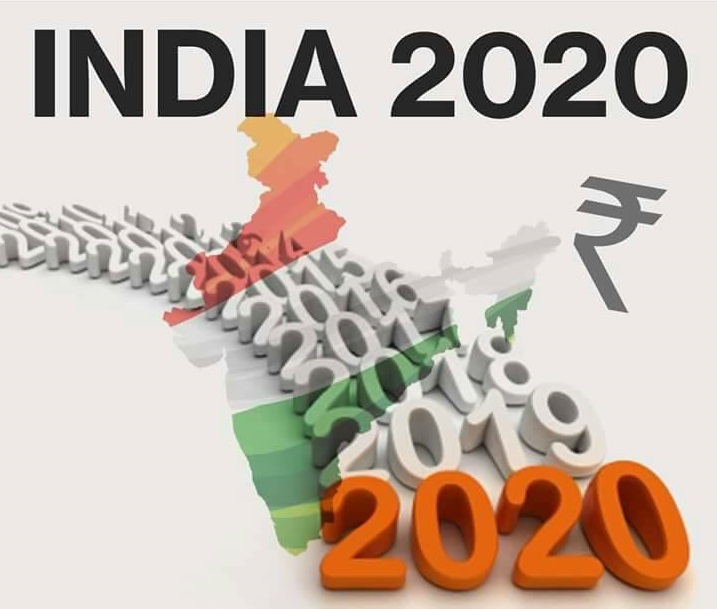In the year 2020, India will become a major beneficiary of its ‘demographic dividend’ with the majority of its population poised to be between the ages of 15-64. This will ensure that the economy’s dependency ratio will be low. This major demographic shift may be able to get India good economic gains
While many Asian countries are facing an ageing population, notably Japan, roughly half of India’s 1.2 billion population is under the age of 26. It is forecasted that by the year 2020, India will become the youngest country in the world with a median age of 29. Due to this, it has already started attracting huge foreign investments and capital inflows. But when things begin to take a turn for the worse, capital is the first thing that gets affected. But we should not forget that India’s capital account in not yet fully liberalized so we have a lesser chance of having a currency crisis in dire circumstances, like it happened in Latin America.
The world has become an uncertain place to live in what with the rise of populism, Donald Trump becoming the President of the United States, Britain voting to exit the European Union, and the largest monetary authorities of the worlds promoting an ultra loose monetary policy. In all this uncertainty, India is being looked at as the ‘bright spot’.
Prime Minister Narendra Modi, in his speech in Madison Square garden, when he visited U.S for the first time as the Indian PM, spoke mostly on India’s 3D advantage, i.e. demographic dividend, democracy and demand. India has been growing at above 7% more since the last couple of years which has gained her the title of ‘the fastest growing economy’, but recently, the title was taken away due to the effects of Demonetisation, when it clocked 6.1% growth. But PM Modi believes that it is a one-off situation and India will retain her crown. The government is already making many policy changes and improvements, one of them being the introduction of the Goods and service Tax (GST).
For Narendra Modi, who has a majority in the lower house but not in the upper, winning in the Uttar Pradesh elections has made things even more easier as it has created an atmosphere of certainty. Many political Pundits are predicting that Mr. Modi will most certainly retain power in the 2019 General Elections.
With the high debt problem in China, most of the investments are shifting to India. Not that India does not have it own problems of NPAs, but the latter’s debt is much smaller and more concentrated and will be resolved quickly. India that faced close to double digit rate of inflation in the pre-Modi era, has been clocking a stable rate of inflation of below 5%, which is thanks to the commodity prices decreasing and fair share of credit going to the Reserve Bank of India.
Now these are all the good things…
There still exist many roadblocks that need to be surmounted before India can ace 2020.
To reap the benefits of the Demographic Dividend she has to take some steps, so that we don’t miss a golden opportunity to become a superpower.
The GDP has been growing at a good pace but it is not inclusive
Most of the population isn’t really able to get a taste of the growth, as it does not trickle down to help that part of the population which is below the poverty line. What is actually happening is that it is just helping 20% of the population (the Gini coefficient is above 50).
For India to come in the middle income group of economies it needs to grow somewhere near 10%, but because it is a democracy it cannot take up totalitarian measures like China (which is not a democracy and has been showing a growth rate of more than 10% since the last two decades) to induce a higher growth rate.
India needs to create more inclusive institutions. Growth in gross value added terms, as measured from the supply side, has been falling ever since last spring. There has been another challenge faced by investors while investing in Asia’s growth economies and that is the fudging of data. Can the data produced by the government be trusted? Due to this lacuna, investing companies have to do their own analysis of the economy, which is both costly and cumbersome, causing a time lag in investing. India’s Nikkei PMI manufacturing index has not shown any sinewy expansion. In fact, it even contracted in January of this year when it came in at around 49.6,
India’s growth is not as fast as the rate at which the people are entering the job market.
11-12 million people are expected to enter the job market each year, whereas the economy is only creating 5-6 million jobs. Summing that up, we get deficiency of 6 million jobs. The current unemployment rate of India is 5%, which will certainly rise if nothing is done about it.
There are many factors that will cause the increase in the unemployment rate:
First, the economy is unable to absorb the entire workforce entering the market, due to low job creation, which can be remedied by growing at twice the current rate in order to satisfy the demand in the job market. There is also one major problem, i.e. large downsizing done by the ITES industry which is the largest employment generator in the Indian economy. It has boomed since the last decade, due to globalization and liberal immigration policies in the U.S. This will push the unemployment rate towards 7%.
Second, which is the most talked about all over the world today, is the fear of automation. Many companies are shifting routine jobs from the humans to the machines. Undoubtedly, this is cost-effective and will only need a handful of employees to operate the technology. The most hit will be the unskilled and semi-skilled employees while the demand for skilled employees will increase.
This leads us to the next point which is about creating a highly employable workforce.
To create more jobs Mr. Modi has also brought in the ‘Make in India’ initiative, which is a novel attempt to boost employment, but unfortunately the participation from MNC’s has been lacklustre.
The third is that, in many universities in India, the information in the textbooks is outdated and therefore the employability of the individual goes down. It is not the individual’s fault entirely; there are some universities that are capable of boosting the employability quotient, but either they are very costly or very difficult to get in (as there are only a handful of good universities). So what can the government do? Isn’t it the student’s fault (if he is not financially able he should’ve worked hard and secured a seat in one of the government colleges)? Well, the answer is both yes and no. What the government should do is set up effective vocational centres where students can train and up their employability quotient.
In India, today, the largest job providers are the unorganised sector and the Small and Medium enterprises (SMEs). They have been punched real hard due to demonetisation as most of their transactions were cash-based. They need loans, both short-term as well as long-term, to fulfil their working capital and Capex needs respectively. As India is a bank-based economy and the Debt and Money market is not much developed, they need to approach banks for financing. But due to the credit growth being poor for the last couple of years on account of the NPAs held by them, banks are scared to extend loans to SMEs and the unorganised sector fearing a rise in the NPAs. This problem of NPAs is not allowing a virtuous cycle to start in the economy. Investment as a ratio to GDP has lagged for quite some time and has even fallen in absolute terms compared to last two years. Due to low availability of credit even the manufacturing sector has been sluggish.
Fiscal Deficit
India was bound to get a ratings upgrade but unfortunately it didn’t, due to its debt to GDP ratio which was at 68%. Its sovereign credit rating has been BBB– for many years now, which is just above the junk bond rating. Many developed countries have their debt-to-GDP ratios above 100%, but yet their ratings are far superior, the reason being their borrowings are in their own domestic currencies while India’s borrowings are in terms of Dollars (U.S). Many veterans of the industry say that India should increase its tax to GDP ratio which would adequately serve its running cost without having to borrow. This is being done by India through demonetisation and by bringing in GST which is to come into effect from 1st July, 2017.
With credit growth not being as robust as expected, it is creating lack of opportunities. Credit growth encourages entrepreneurship which creates jobs which in turn creates demand and hence a virtuous cycle comes into being.
The need of the hour, then, is not just to create jobs but to create ‘good jobs’.
The good thing is that India is not an export-dependent nation as compared to other nations which have experienced a sturdy growth due to rapid growth in the global economy. India’s own market is so big that it does not need to depend on exports which China is learning now and taking structural reforms to covert itself into a consumption-led growth.
Till now we are not seeing any tangible results in terms of job creations but some reforms are being implemented which were introduced by the previous government but were blocked by the Opposition (which is now the ruling party) at that time.
The need of the hour is clear-cut, honest implementation of hardcore reforms and not the muddied waters of lynchings, throttled free speech and colossal interference in the personal life of the populace.
India is on the right path, and taking the right path can help it achieve its goals. The time is not to act later, soon or tomorrow; it is to act now. Only then will it be able to reap the benefits of the demographic dividend. After all, to reap profits we need to invest first.
By Adityapal Singh Jaggi
The Economic Transcript- June 2017 Issue


